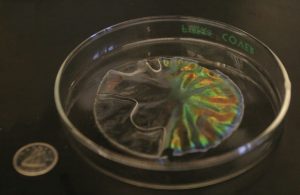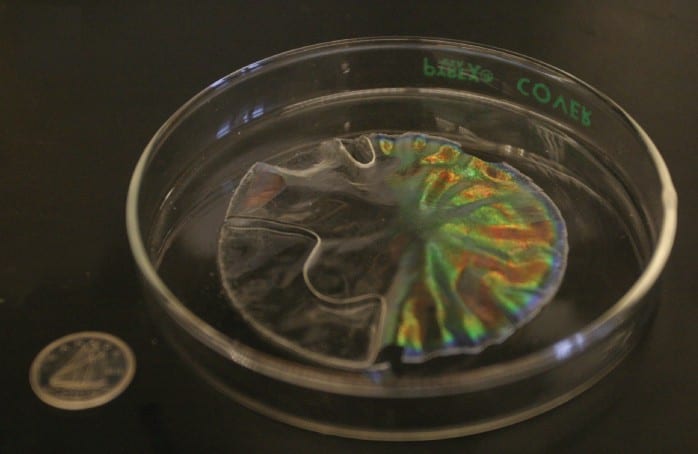 Structural color, the phenomenon of wave interference that gives rise to color from otherwise transparent materials, is the source of the brilliant iridescence from Morpho butterfly wings, peacock feathers and opal gemstones. Inspired by this beauty in nature, researchers have devised ways to prepare synthetic materials with structural color, termed photonic crystals.
Structural color, the phenomenon of wave interference that gives rise to color from otherwise transparent materials, is the source of the brilliant iridescence from Morpho butterfly wings, peacock feathers and opal gemstones. Inspired by this beauty in nature, researchers have devised ways to prepare synthetic materials with structural color, termed photonic crystals.
Recently, it was discovered that nanocrystalline cellulose (NCC) can be used as a template to make photonic silica films. The NCC assembles with the silica into a chiral nematic composite with the layered, twisting structure of a chiral nematic liquid crystal. Calcination of the composite destroys the cellulose template, leaving behind an iridescent mesoporous material with high surface area. Although there are many potential applications of these materials such as photonic coatings or sensors, a major drawback is the tendency of these materials to crack into small pieces during preparation.
Now, in new work, Dr. Joel Kelly et al. have discovered a simple way to circumvent this issue of cracking by adding a sugar such as glucose to the mixture before evaporation. The sugar alters the curing rate of the silica precursor, but only minimally impacts the porosity and photonic properties of the resulting silica. This discovery allows for the preparation of large areas of the photonic mesoporous silica, and the researchers can begin testing their potential in several anticipated applications.

















